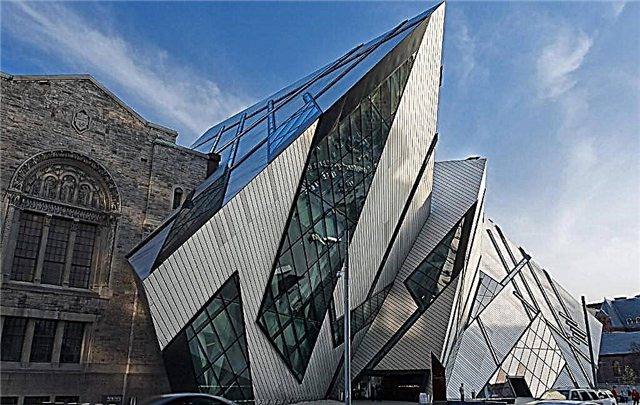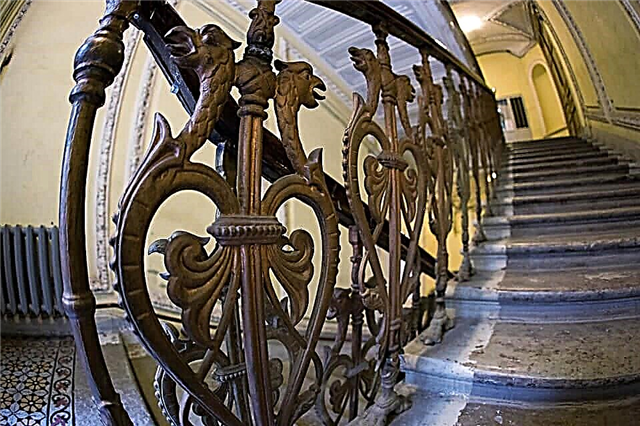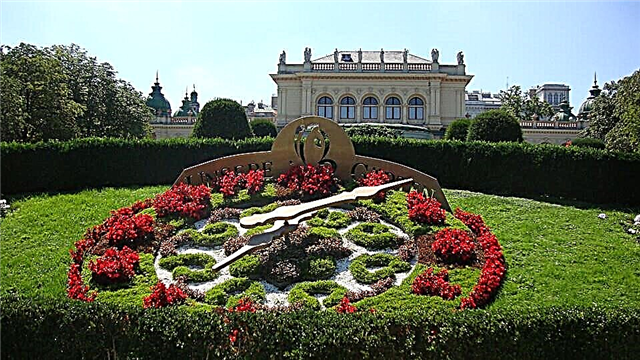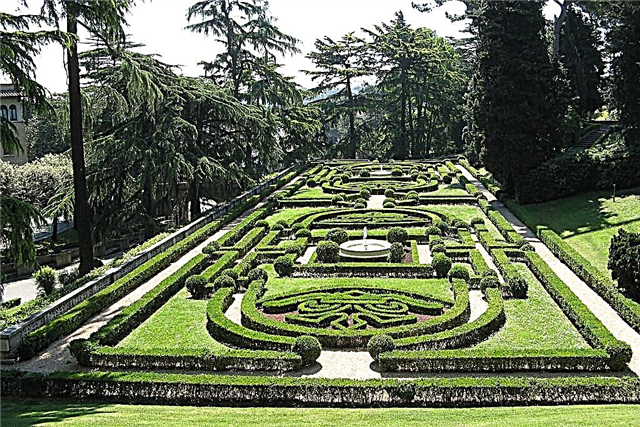The Holy Trinity Monastery in Murom is visited by pilgrims from all over Russia to honor the memory of the holy spouses Peter and Fevronia, get married or pray for the strengthening of the family union.
Short story
The love story of Peter and Fevronia is one of the most beautiful legends of the Murom land... Prince Peter, who lived in the XIII century, fell ill with leprosy, from which no one could cure him. In a dream, the prince had a vision that a peasant girl, the daughter of a beekeeper who was extracting wild honey, would heal him. Virgo Fevronia was wise, she knew how to heal with herbs and understood the language of animals.

A bird's eye view of the Holy Trinity Monastery
After healing from an illness, Prince Peter married Fevronia, but soon the couple retired into exile. The boyars did not want to put up with the commoner in the princely mansion. The prince and his wife boarded boats and wandered along the Oka, until finally the boyars came to their senses and prayed for the return of the spouses to Murom.

Trinity Cathedral with a bell tower
For a long time the princely couple ruled the city, and Fevronia managed to earn the love of the townspeople. In old age, the couple took monastic vows and on June 25, 1228, they died on the same day and hour. Their bodies were placed in separate coffins, but on the morning of the funeral they were found to be in the same sarcophagus. Since 1992, the relics of the holy spouses have been buried in the cathedral church of the Trinity Monastery.

Church of St. Sergius of Radonezh
Temples of the Holy Trinity Monastery
The Holy Trinity Monastery was founded in 1643 by a wealthy Murom merchant Tarasiy Borisov, nicknamed Bogdan Tsvetnoy on the site of the so-called "old settlement", where in the XII century there was a wooden church in the name of Boris and Gleb - the first Russian saints. Tarasiy Tsvetnov's “need and gratification” was used to build the Holy Trinity Cathedral, which has survived to this day.
Against the background of the austere Murom temples, the Trinity Cathedral stands out for its graceful proportions and rich decor. Once its walls were decorated with glazed tiles with images of outlandish plants, birds and animals. The carved drums of the cathedral are framed by kokoshniks.

From left to right: Church of the Kazan Icon of the Mother of God, bell tower of the Trinity Monastery
The chapters are crowned with forged gilded crosses made by the best Murom blacksmiths of the 17th century. In 1648-1652, the Church of the Kazan Icon of the Mother of God with a hipped multi-tiered bell tower was added to the Trinity Cathedral. Thanks to the slotted edges of the tent and the "openwork" decoration, the architecture of the bell tower is completely devoid of ponderousness. The unique charm of the temple is given by carved stone details. The windows on the facade are framed with curly platbands with high kokoshniks. An additional decoration is a wide cornice in the upper part of the facade, on which a row of deep kokoshniks rests.

Monastery fountain
In Soviet times (in 1975), the Church of St. Sergius of Radonezh, brought here from the village of Krasnoe, Melenkovsky district, appeared on the territory of the monastery. The domes of this wooden church are crowned with an alder ploughshare, shining silver in the sun. At present, the monastery has several farmsteads and a boarding house "Nadezhda" for minors and the elderly. At the Bogoroditsky courtyard, located 16 km from Murom, in 1955 a wooden church was consecrated in honor of the Murom Icon of the Mother of God.

Chapel of Peter and Fevronia
The Vilna cross is one of the first shrines of the Trinity Monastery
In 1923 the Holy Trinity Monastery was closed. The opening of the monastery took place on May 15, 1991 - on the day of commemoration of St. passion-bearers Boris and Gleb... On May 15, 1996, for the fifth anniversary of the revival of the monastery, the city museum returned to the monastery its oldest shrine - the Vilna reliquary cross. This cross was found in 1657 by Vasily Mikulin from Arzamas during the capture of the city of Vilna (present-day Vilnius) by Russian troops. Vasily kept the shrine at home until a heavenly voice ordered him to hand over the cross to the Trinity Monastery.
Attraction rating











